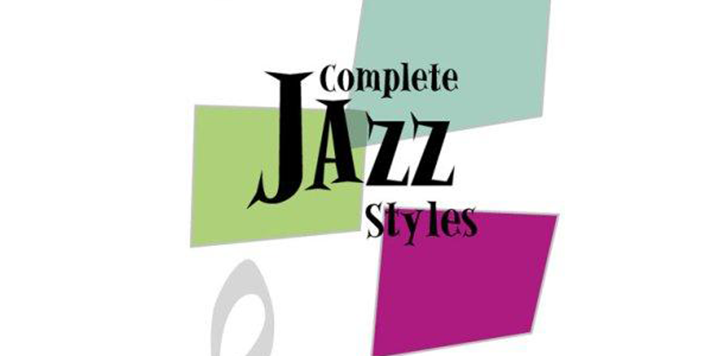A LITTLE BIT ABOUT THE “COMPLETE JAZZ STYLES BOOK 2”
“Complete Jazz Styles Book 2” has 12 different etudes in various styles – Latin, Swing, Funk, Ballad, Waltz, Rock, and Bop. “Nobody’s Fool” (ballad), “Streamline” (the rock tune), and “Same as Yesterday” (slow funk) are more advanced tunes for a more advanced player or tunes for when a student is looking for something more challenging and/or has already studied the other tunes.
“Complete Jazz Styles Book 2” has two tracks for each tune – a demonstration track (where the student can hear how the track should sound, or so they can play along with Randy playing the melody) and an accompaniment track where the student can play the track alone.
Randy Hunter plays woodwinds on the tracks, Guy Fenocchi plays guitar, John Hooper is on bass and Tim Nash is on drums.
“Complete Jazz Styles Book 2” is available for saxes (Eb and Bb), trumpet, and trombone. Randy Hunter has several other books available including a duet book. “Complete Jazz Styles Book 2” is endorsed by people like Joe Lovano.
MY INITIAL THOUGHTS ON THE “COMPLETE JAZZ STYLES BOOK 2”
Visually, “Complete Jazz Styles Book 2” is very appealing. The book is very colorful, very attractive to the eye – something a student would pick for themselves based on the look of the book. I think that this is a good thing for a book aimed at students to have because in addition to teacher recommendation, students will trip across it on their own as well since image plays a big part in making something appear attractive to younger people.
Looking at the music, there is not “a lot of black” (or too many notes with too difficult rhythms), so it is not “scary” to look at as some etude books are, and is less likely to intimidate a student. The music is simple enough to give the student ideas of what to play over the given changes and with the CD, allows them to experiment with their own ideas as well.
There are comments on what to do for each tune that help to explain and aid the style the etudes should be played with at the bottom of each tune. I feel that these side notes should be near the top so that it is the first thing that the student sees. I also think that the song/songs that the changes are based off of should be listed so that the student knows as reference.
So, after reading the liner notes and text/information in the book, I threw the play-a-long CD into my boom box and played along with the CD. I found that listening to Randy Hunter play all the etudes first really helped as far as style and articulation. You heard his interpretation of the etude first, giving you an idea of how it is meant to be played, but also leaving it open to your own interpretation. I think this really helps students to emulate someone else, and Randy Hunter has a great sound to imitate.
Also, the fact that the book has a play-a-long CD helps the student to practice playing with a group. It is a great alternative to an Aebersold which only gives you a melody and leaves it up to you to come up with a solo, “Complete Jazz Styles” gives you a brief melody and an example of an excellently shaped, example solo. This book has great lines that every student should make their own and will really help improve their jazz vocabulary and solo ideas.
Get the Book for Tenor Sax Complete Jazz Styles Introductory Etudes in Jazz Comprehension, Book1: Tenor Sax
Get the Book for Alto or Bari Sax Complete Jazz Styles Introductory Etudes in Jazz Comprehension, Book1: Alto/Bari Sax
Get the Book for Trumpet Complete Jazz Styles Introductory Etudes in Jazz Comprehension, Book1: Trumpet
Get the Book for Trombone Complete Jazz Styles Introductory Etudes in Jazz Comprehension, Book1: Trombone
[template id=”182″]

